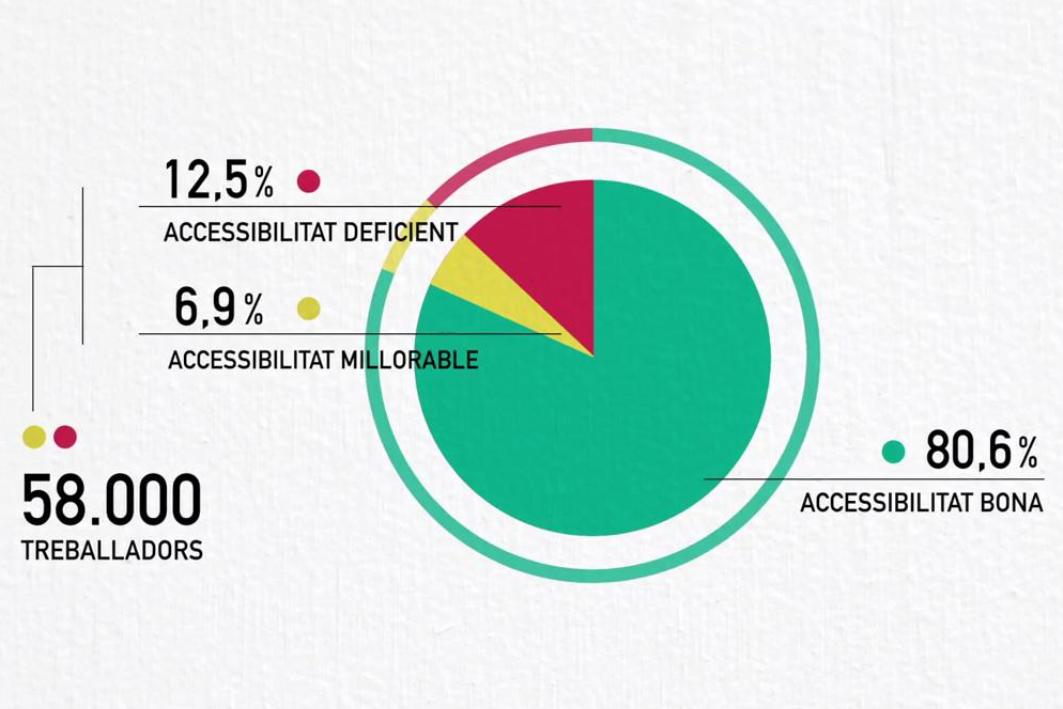18-02-2014
The Pacte Industrial de la Regió Metropolitana de Barcelona has presented a study entitled “Accessibility of Mass Public Transit for Industrial Estates in the Barcelona Metropolitan Region”, which it produced in collaboration with the Metropolitan Transport Authority (MTA). The study provides an insight into the public transport services that are available for almost 300,000 people who work on the 728 industrial estates in the Barcelona Metropolitan Region, and serves as an aid to improve their mobility planning.
The study has a practical focus: for each estate, it indicates the recommended action to be taken in order to improve access to mass public transit. Thus, it is an up-to-date and practical tool to facilitate the taking of actions to guarantee that employees are able to access workplaces located on industrial estates, and that they do so mainly via a public transport system that is communal, safe and sustainable.
Methodology of the study
The study undertakes a quantitative analysis of workers’ access to all the industrial estates in the Barcelona Metropolitan Area, by means of the Accessibility Index for Mass Public Transit (iATPC). The iATPC is a numerical indicator that was specifically created for this study and calculates the level of access to public transport for anywhere in the region, with “access” taken to mean the total accessibility of the nearby bus, metro, tram and train lines and the amount of travel on foot at the end of the intermodal chain. For the purposes of these calculations, medium, long-distance and high-speed train lines were not taken into account.
The study establishes six different levels of accessibility: very good, good, acceptable, improvable, deficient and inaccessible. In order to synthesize the information, these levels of accessibility have been simplified into good (corresponding to the “very good”, “good” and “acceptable” categories in the study), improvable (corresponding to the same category in the study) and deficient (corresponding to the “deficient” and “inaccessible” categories in the study).
Additionally, the study performs a qualitative analysis (by means of a survey) of the industrial estates in the 45 municipalities that are members of the Pacte Industrial association. The analysis includes information on matters such as accessibility on foot and by bicycle (see pages 66 to 102 of the study).
Results of the study
Almost 58,000 workers on industrial estates have poor access to public transport
The results of the study show that 80.6% of workers on industrial estates in the Barcelona Metropolitan Region have good access to public transport, while 6.9% have improvable access and 12.5% have deficient access. In absolute terms, access to public transport for 57,500 workers on industrial estates in the Barcelona Metropolitan Region is either deficient or improvable.
The level of accessibility varies from county to county
Barcelonès is the county that boasts the best levels of accessibility, while Alt Penedès, Baix Llobregat, Vallès Occidental and Vallès Oriental are those with the greatest number of workers suffering from deficient or improvable access. Of those four, Baix Llobregat is the county with the most workers suffering from deficient or improvable access (20,500); however, in relative terms, Alt Penedès has the highest percentage of workers with poor access (88% of the total, representing 7,000 workers).
Proposed improvements
Accessibility can be improved by taking a wide range of actions, which the study has grouped into the following areas:
- Improving access to mass public transit. Given the rigidity of train transport, improvements to bus access are proposed. These improvements could be aimed at increasing overall access to a poorly connected industrial estate, or simply improving access to a poorly connected part of the estate (e.g. by adjusting the placement of bus stops).
- Improving accessibility for bicycles. For those estates that already have a dedicated pedestrian access, and provided they meet the minimum size requirements, the study suggests adjusting them to allow for bicycle access.
- Improving accessibility for pedestrians. For those estates located within or very near to urban centres, and which meet the minimum size requirements, the study suggests providing them with a dedicated pedestrian access.
- Finally, the study also considers a specific series of actions for smaller industrial estates with difficult access.
Tags: Industrial Pact Dossiers, Industrial parks, Mobility, Public transport
